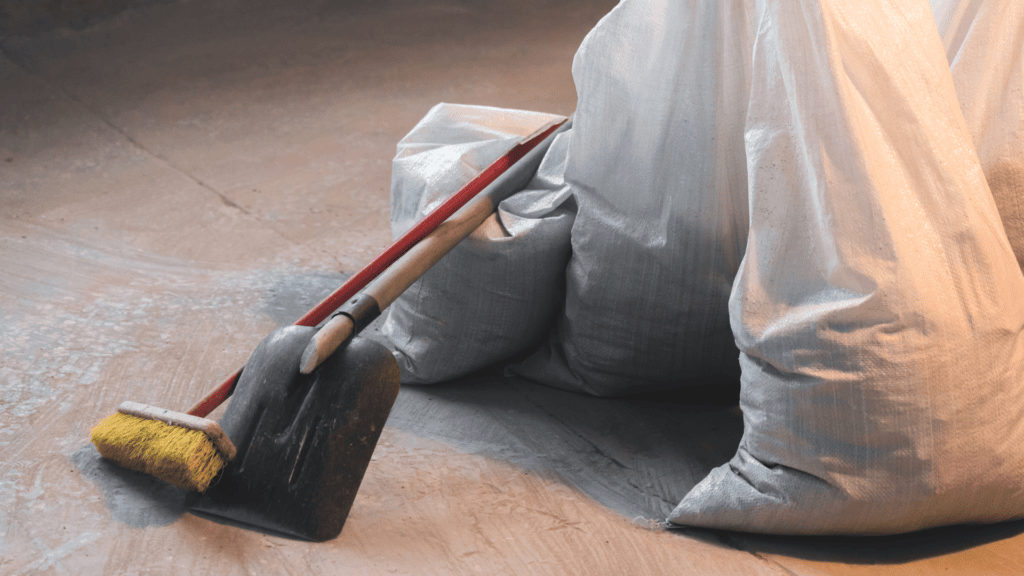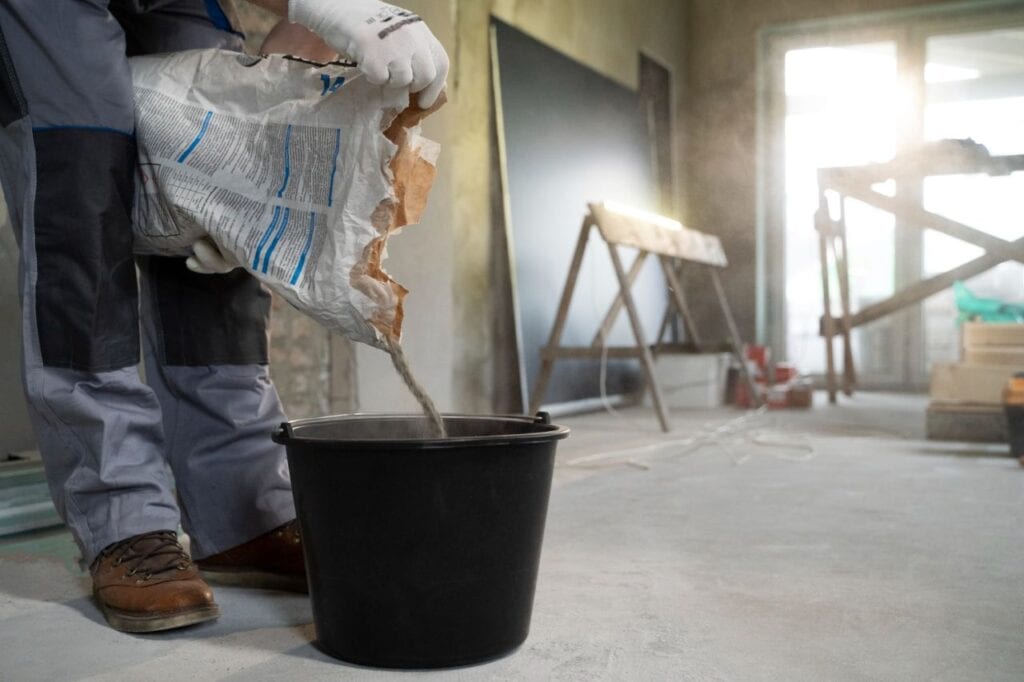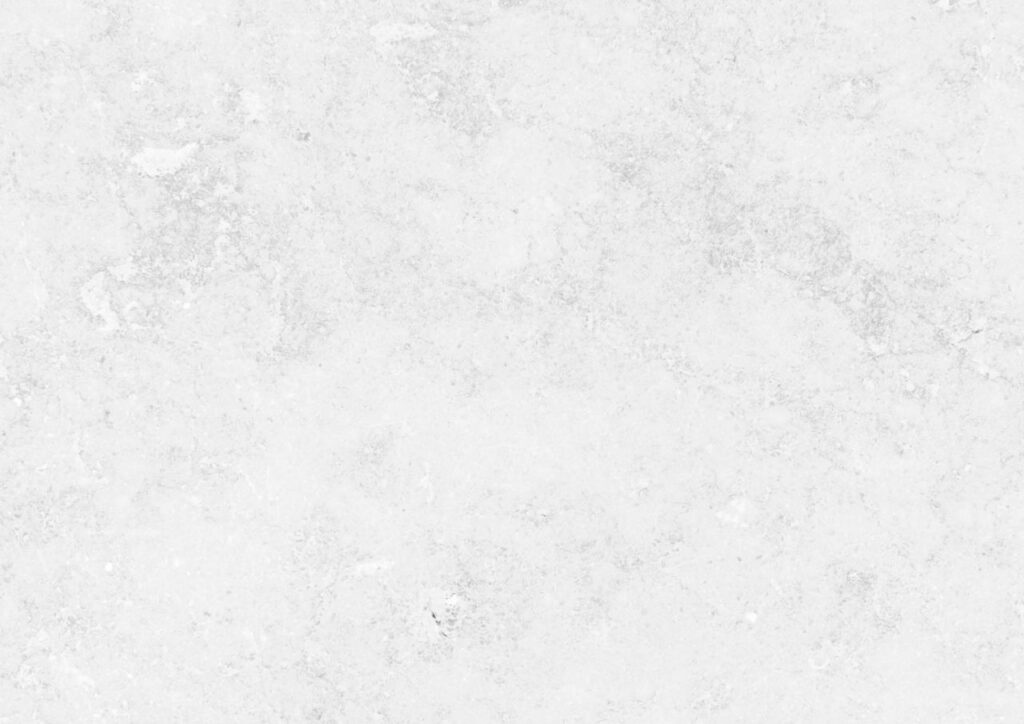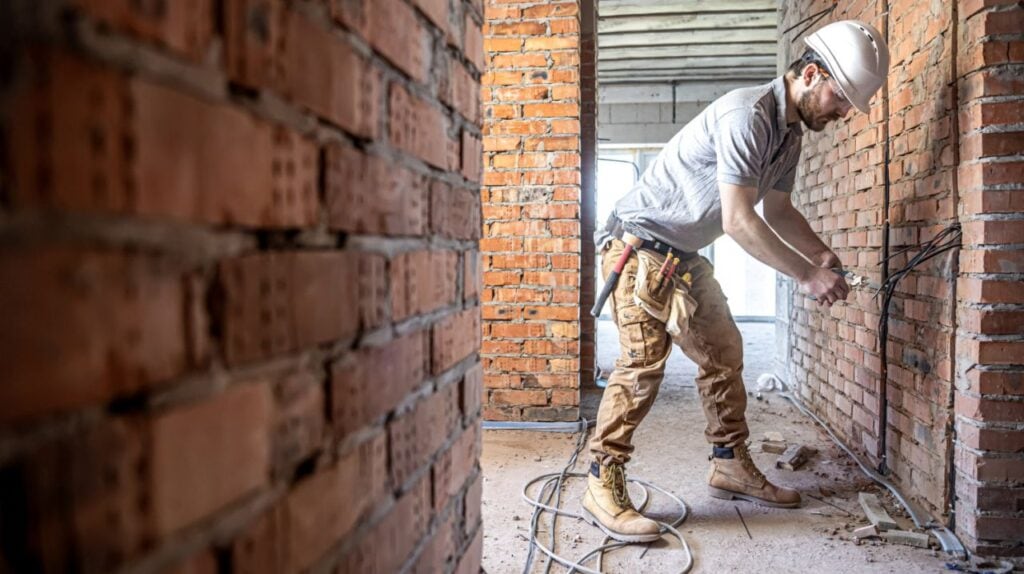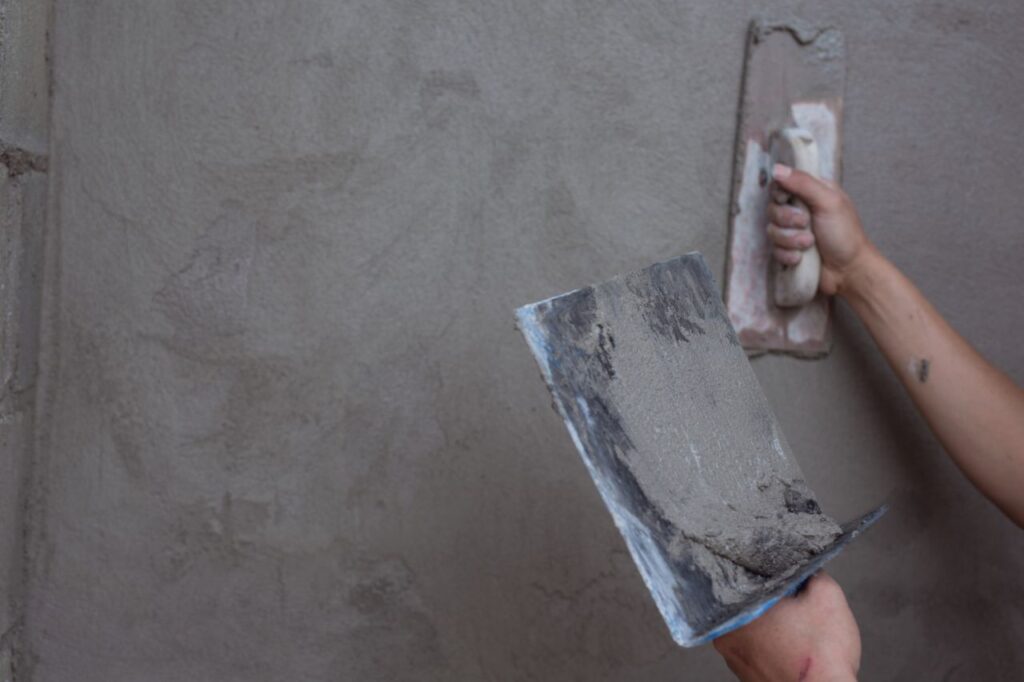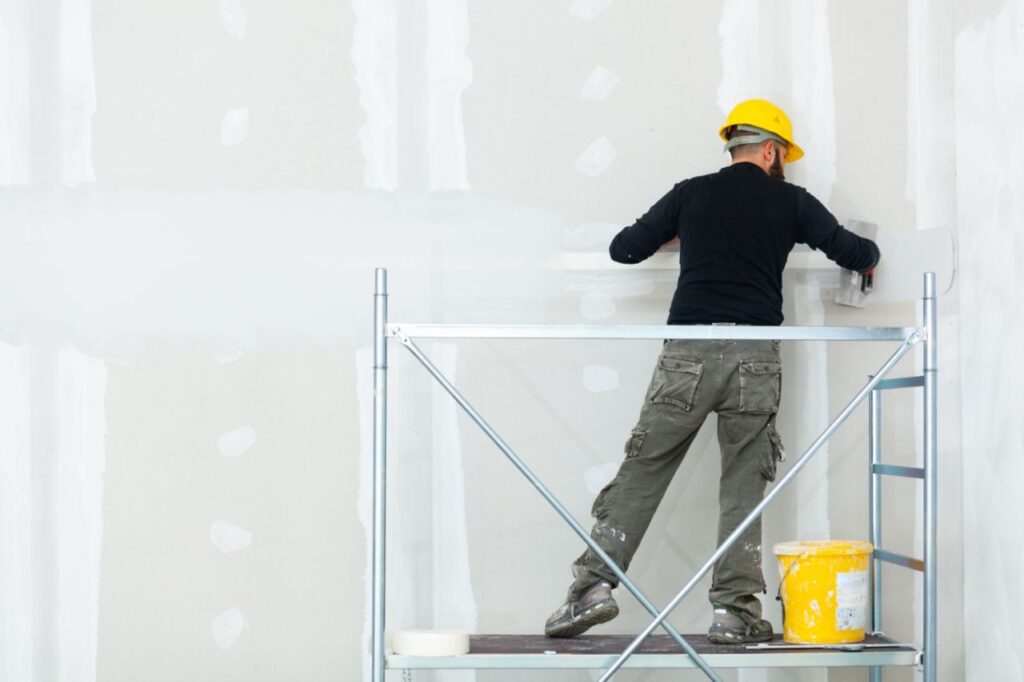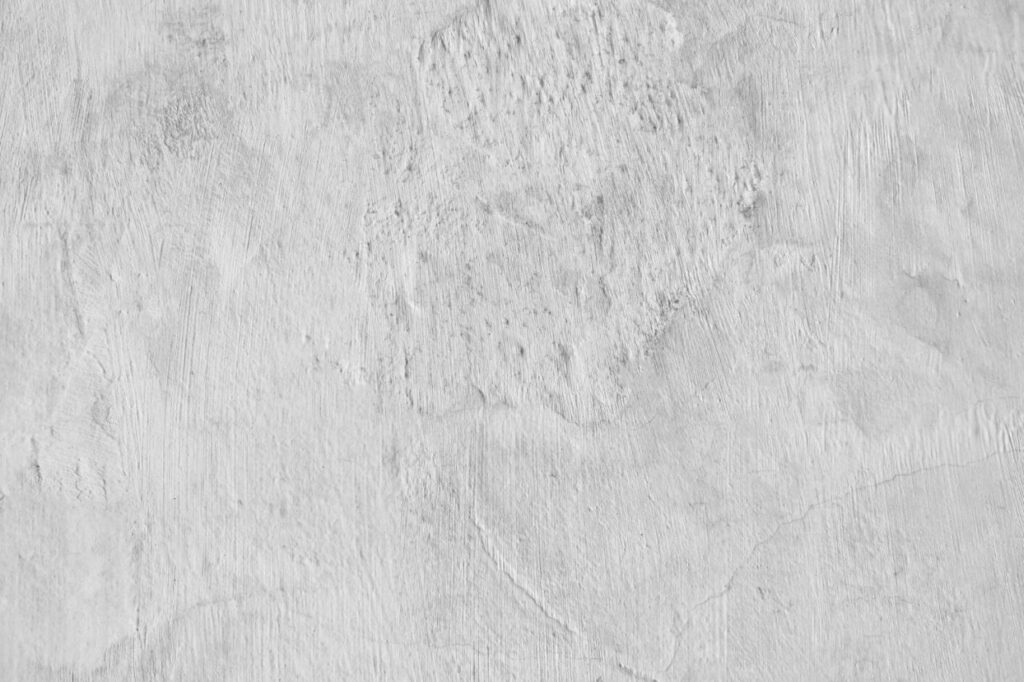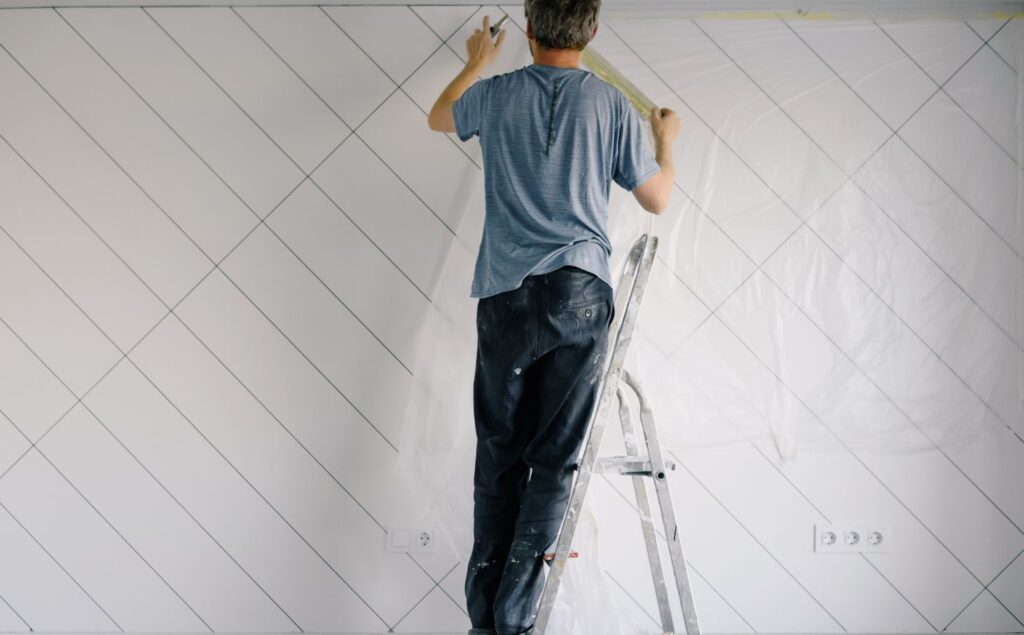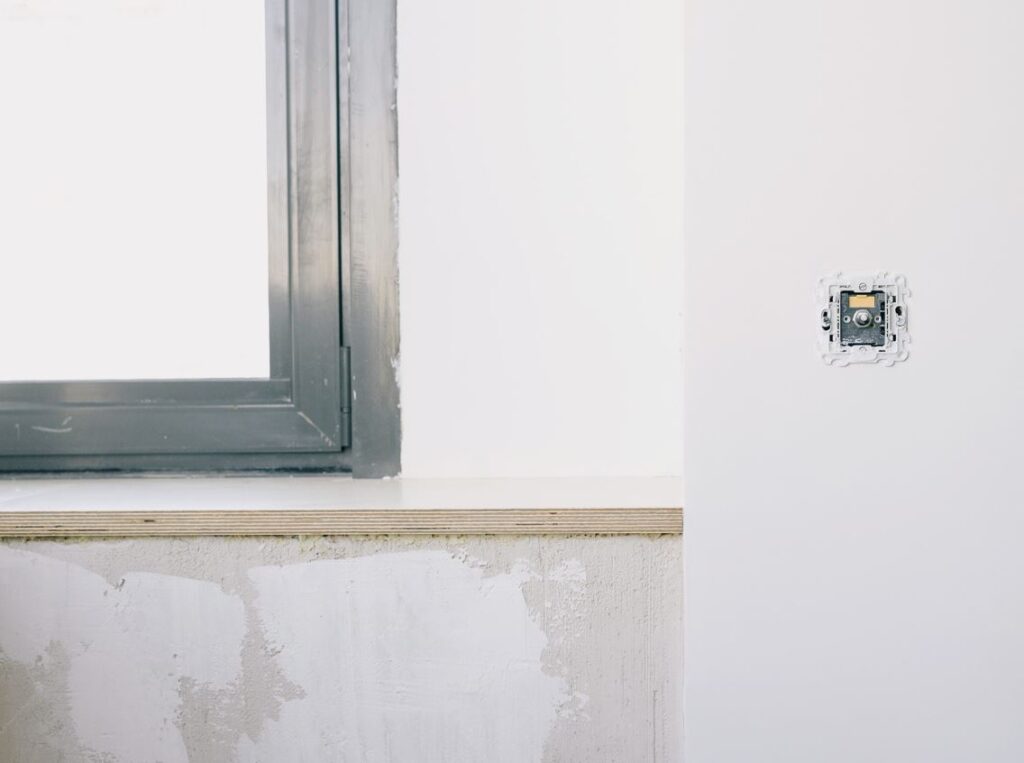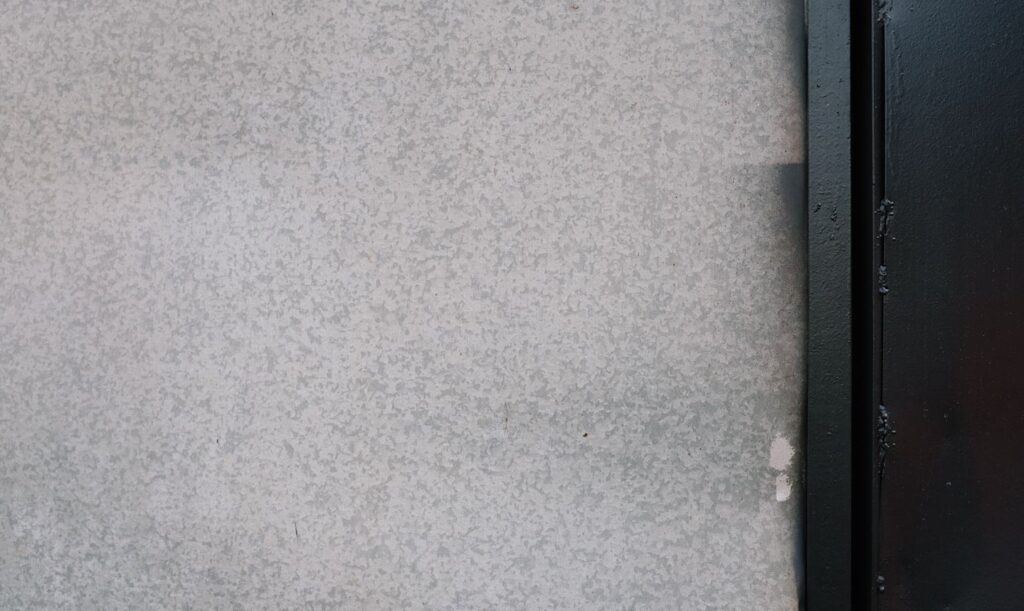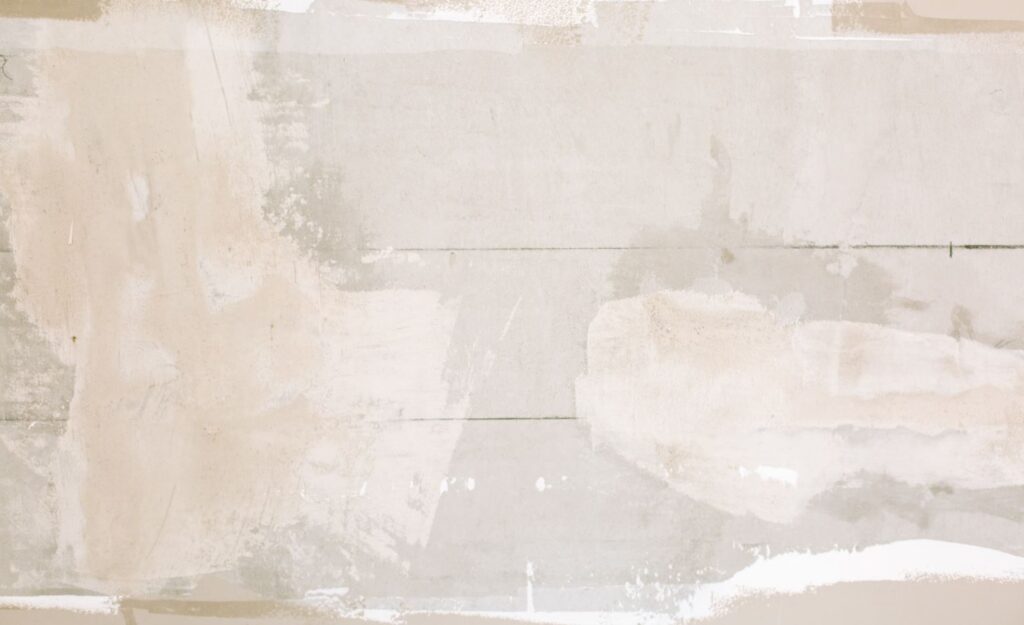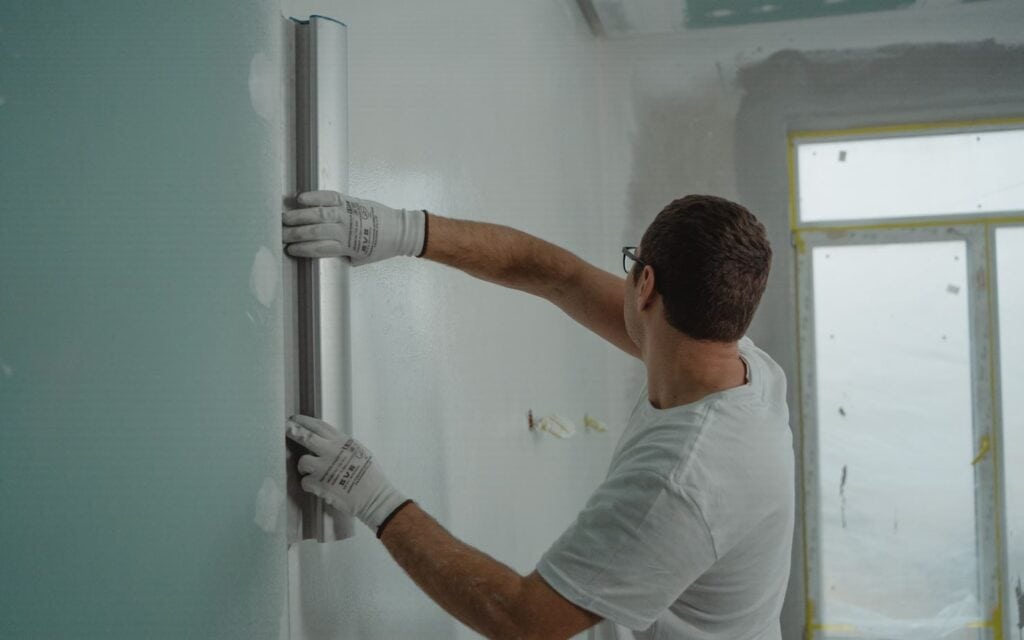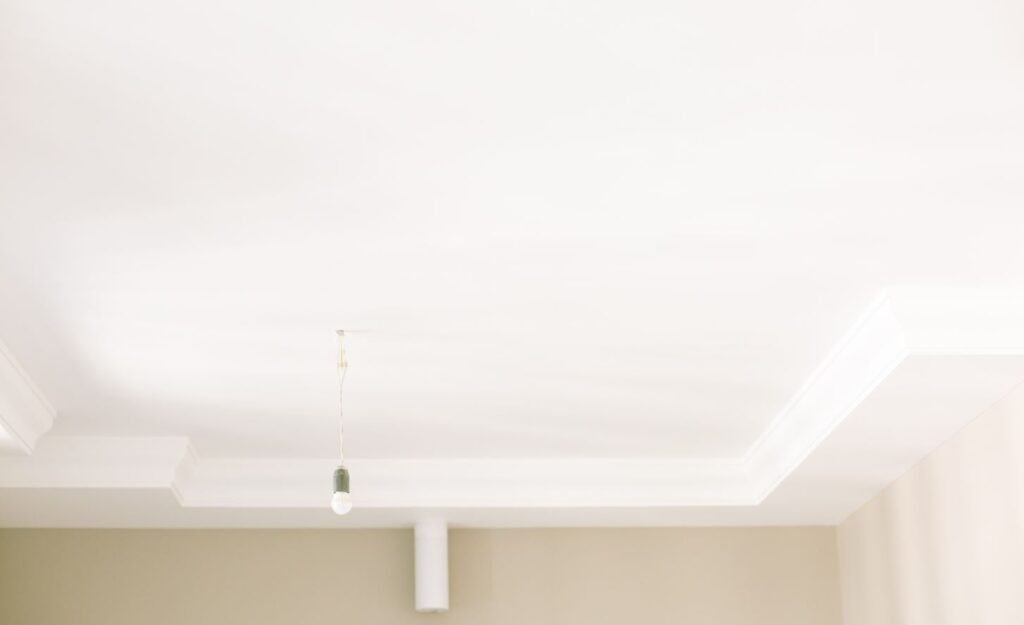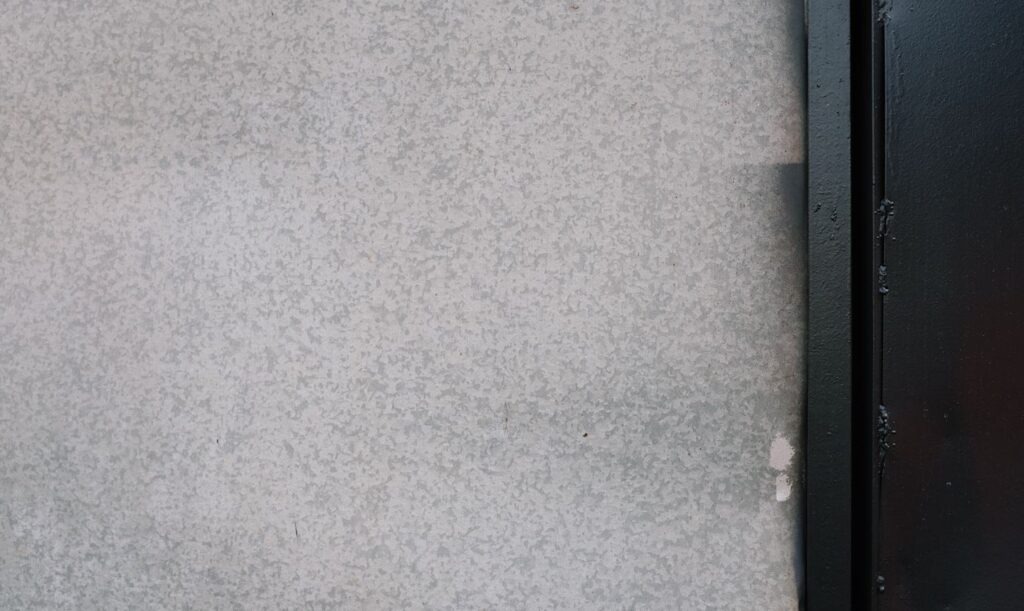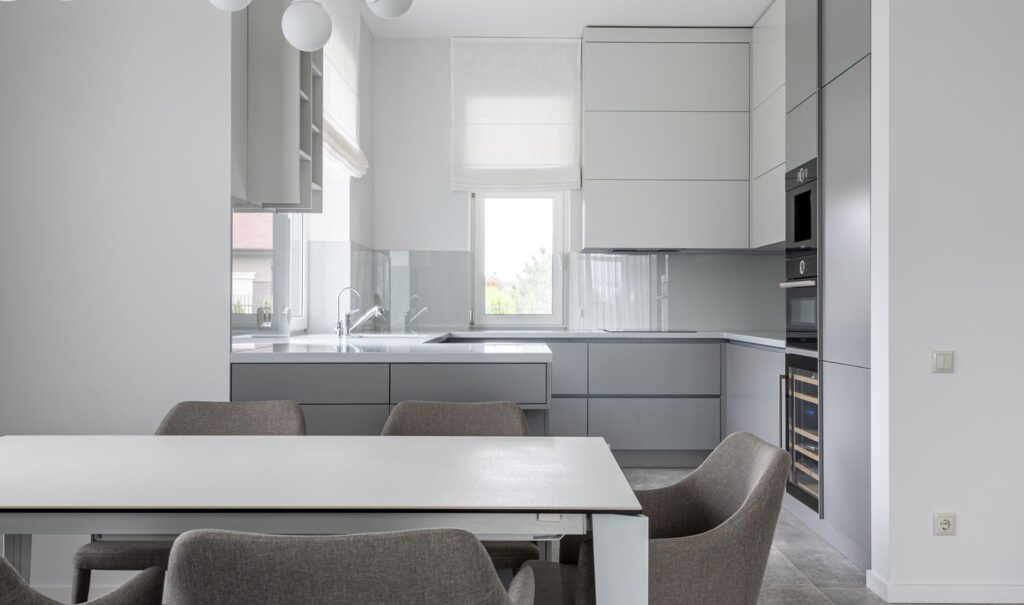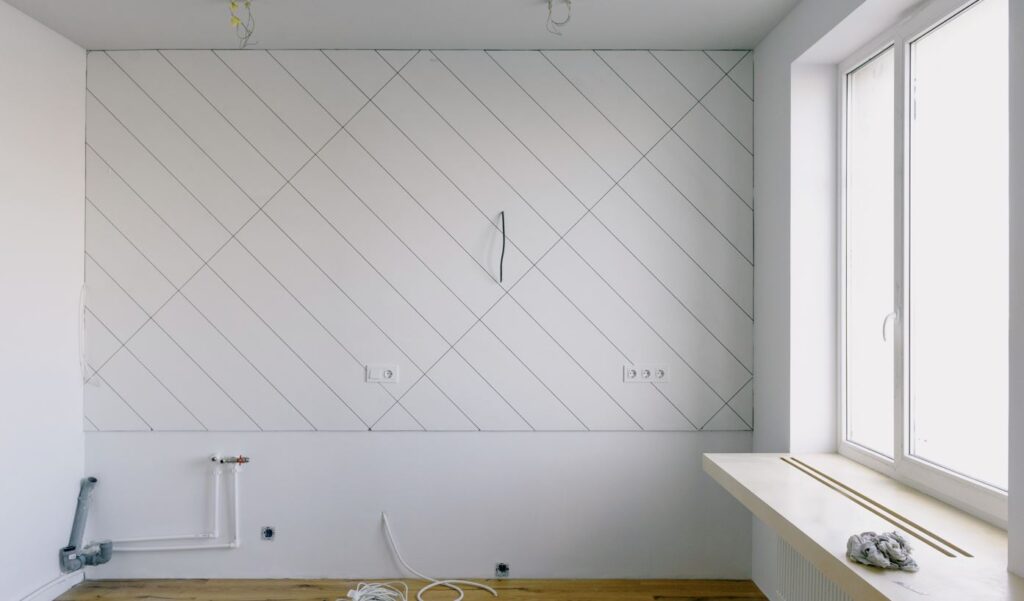Plaster dust can be a pain to get rid of, but we'll cover that and more in this post. Years of buildup can be easily and quickly removed in a single afternoon with the right tools and methods. However, dusty surfaces look bad and can harm people with asthma and allergies.
The good news is that various solutions are available for this issue, such as vacuuming, wet mopping, washing the floor with water and vinegar, baking soda paste, soap and water, and so on.
To assist you in selecting the most appropriate cleaning strategy, we have compiled a number of our tried-and-true recommendations. Ready? Let's get going!
What Is Plaster Dust, And Why Is It Harmful To Laminate Flooring?
Plaster dust refers to the fine powder generated when working with drywall or plasterboard. It consists of tiny particles of gypsum and other debris released into the air during activities such as cutting, sanding, or removing plaster. This dust can settle on various surfaces, including laminate flooring.
The harmful effects of plaster dust on laminate flooring stem from its abrasive nature. The particles in the dust can act like tiny sandpaper, scratching and wearing away the protective layer of the laminate. Over time, this can lead to a dull and damaged appearance.
When plaster dust settles on the laminate surface, it can embed itself into the texture, making removing it difficult. This not only affects the aesthetic appeal of the flooring but can also make it more challenging to clean and maintain.
Moreover, plaster dust may contain other contaminants and impurities that can further compromise the integrity of the laminate flooring. For example, if the dust comes into contact with moisture, it can create a muddy residue that is difficult to remove and can potentially stain the surface.
To ensure the longevity and pristine condition of your laminate flooring, it is essential to address plaster dust promptly and employ proper cleaning techniques that minimise the risks of damage or discolouration.
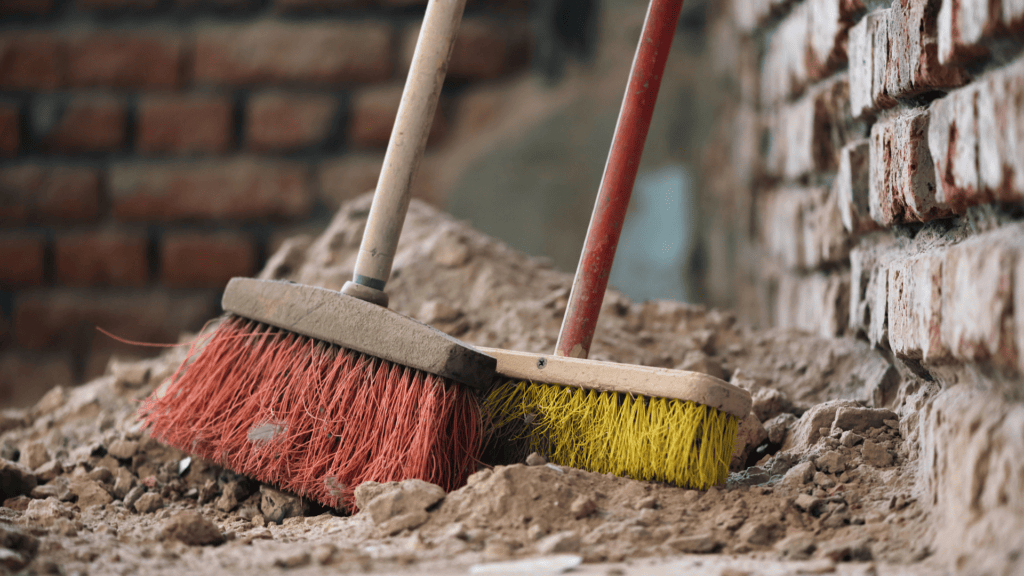
Methods For Cleaning Plaster Dust From Laminate Floors
Laminate floors are vulnerable to damage from plaster dust, whether the work is being done in the same room or an adjacent one. What would you do if plaster dust were to fall onto your floor?
Here are various approaches that may help you get rid of it.
Make A Solution Of Water And Vinegar
Put some white vinegar and water in a spray bottle and shake it up. The dust can be removed by spraying the solution onto the affected area and then wiping it down with a dry cloth. Make sure to give the floor a good vacuuming to get rid of the extra dust.
Make A Solution Of Baking Soda And Water
Put a cup's worth of baking soda in a separate dish. Add enough water to form a thick paste. Apply this solution to the dusty area, wait 30 minutes, and then wipe it down with a dry cloth. To get rid of any dust that may have settled into the cracks between the laminate tiles, you should then thoroughly vacuum the floor.
Dish Detergent And Water Solution
Combine a small amount of dish soap solution with a bucket of water. Scrub the solution into the laminate flooring with a soft bristle brush, and then dry the floor with a clean towel to remove any excess moisture. Plaster dust that has dried on your laminate floor can be easily removed with soap.
Use Carpet Cleaner To Clean Your Laminate Floors
Using carpet cleaner to clean your laminate flooring is a fast and simple option. First, spray the area and remove the spray with a dry cloth. The next step is to give the floor a good vacuuming to eliminate any dust wedged between the laminate tiles.
Make Use Of Vinyl Floor Cleaner
If you have laminate flooring, it has been exposed to plaster dust from a nearby restoration project, and you should clean it with vinyl floor cleaner, which is excellent at dissolving filth, dust, and grime. You can easily remove the dust by spraying some on the area and then wiping it with a dry cloth. To get rid of any dust that may have settled into the cracks between the laminate tiles, you should then thoroughly vacuum the floor.
Make Use Of Ammonia Solution
Put some ammonia and water in a spray bottle and shake it up. Dust should be removed with a dry cloth after spraying the cleaning solution on the grimy spot. To get rid of any dust that may have settled into the cracks between the laminate tiles, you should then thoroughly vacuum the floor.
Use Alcohol Solution
Scrub off the dust while it's still wet. If that doesn't work, you can wipe the laminate floor with an alcohol-soaked rag to remove the plaster dust. Plaster dust can be easily wiped from a laminate floor by pouring a little amount of alcohol onto a clean cloth and rubbing the cloth in circular motions.
Directly Apply Water And Vinegar
If it is still wet, you can remove the plaster dust with a damp cloth. If not, combine equal water and vinegar in a spray bottle and use as directed. The dust can then be removed with a clean, dry cloth after spraying the mixture onto the affected area. To get rid of any dust that may have settled into the cracks between the laminate tiles, you should then thoroughly vacuum the floor.
Make Use Of Dry Cleaning Solvent
Put some dry cleaning solvent on a cloth and rub it into the dirty area of your laminate flooring. Next, apply more solvent and wipe it off with a fresh cloth when necessary. To get rid of any dust that may have settled into the cracks between the laminate tiles, you should then thoroughly vacuum the floor.
Make Use Of A Vacuum Cleaner
Using a vacuum with a brush attachment is recommended for most dust and grime removal. If you have laminate flooring, this will be useful for cleaning the space between the planks and any cracks or grooves.
Removing Plaster Dust From Laminate Flooring: A Step-By-Step Guide
To successfully clean your laminate flooring of plaster dust, follow these steps:
Step 1: Preliminary Cleaning
To prepare the area for the removal of plaster dust, a preliminary cleaning should be performed to remove any loose debris or larger particles. Then, cleaning the laminate surface later will be able to handle the presence of these particles.
- To clean the laminate floor, sweep it gently with a broom with soft bristles or use a vacuum with a soft brush attachment. When cleaning the floor, get into all the nooks and crannies.
Step 2: Mopping With Damp Detergent
When any loose dirt has been removed, a moist mopping with a light detergent or laminate floor cleaner is the next step. This method will thoroughly clean your laminate flooring and remove lingering plaster dust.
- To clean laminate floors, fill a bucket with hot water and a small amount of mild detergent or a laminate floor cleaner, following the directions provided by the manufacturer. Don't use too much detergent because it will leave a soapy film behind.
- Soak a sponge or mop head in the cleaning solution and squeeze out the excess water gently. The mop or sponge should dry in water; barely damp will do.
- Mop the laminate floor a little bit at a time to avoid damaging the surface. Move along the boards with even, light strokes in the direction of the grain. Doing so will aid in achieving a thorough and streak-free cleanup.
- Any spots with plaster dust or residue should be given extra attention. Increase your mopping pressure and keep going until all traces of dust have been removed.
Step 3: Spot Cleaning
Plaster dust spots and residue are common to find after a general mopping. These spots could use some extra TLC and more thorough cleaning.
- Get a microfiber cloth or sponge and water, then scrub at the stains or residue. Use light, circular motions and a gentle touch to soothe the affected areas. The dust particles will become easier to dislodge and remove.
- Using a laminate floor cleaner is another option specially formulated to be gentle and non-abrasive. Spot-clean the affected areas by applying a small amount of cleaner to the microfiber cloth or sponge.
- To finish cleaning the laminate after removing the plaster dust, use a dry microfiber cloth to wipe down the entire surface. This will ensure the flooring is completely dry and free of any remaining moisture.
Step 4: Regular Maintenance
Maintaining the look of laminate flooring and keeping it dust-free requires regular cleaning and care. Consider these maintenance tips if you want your laminate flooring to last a lifetime and look great.
- To prevent dust, dirt, and debris from building up on the floor, sweep or vacuum it frequently. To prevent scratching, sweep with a soft-bristled broom or vacuum with a soft brush attachment.
- Any spills or stains should be cleaned immediately with a damp cloth or mop. Water can seep into the joints and cause damage, so use it sparingly.
- Use door mats or rugs at each entrance to cut down on the amount of dirt and dust being tracked inside. This will ensure you don't have to clean as often.
- Laminate flooring can be damaged by using too much water, too much steam, or too many abrasive cleaning products. Use only the detergents or cleaners for laminate floors that the manufacturer suggests.
The Risks Of Ignoring Plaster Dust On Laminate Flooring

Plaster dust on laminate flooring can cause various issues if not addressed. Therefore, recognising the dangers and taking steps to avoid them is crucial. The risks of ignoring plaster dust are as follows:
Abrasions And Scratches
The tiny particles in plaster dust can scratch the laminate if they come into contact with it. In addition, dust particles can wear down the flooring's protective layer over time, leaving marks and diminishing its appearance.
Flooring Has A Shorter Life Span.
Plaster dust can slowly erode the laminate flooring's protective layer if left unchecked. Because of this, it may need to be replaced or repaired sooner than expected. Therefore, maintaining your flooring regularly will increase its longevity.
Poor Hygiene And Poor Indoor Air Quality
If the plaster dust is contaminated with pollutants or allergens, it can worsen the indoor air quality. In addition, people with allergies or respiratory conditions may experience discomfort from breathing in the dust particles. Therefore, plaster dust contributes to an unhealthy indoor environment and should be removed regularly.
Appearance Is Dull And Lacklustre.
Plaster dust has the potential to dull the appearance of laminate flooring as it settles and forms a layer of fine particles. As a result, the flooring can end up looking dull and lifeless, which is bad for the room's aesthetics.
Difficulty In Cleaning
Plaster dust can make cleaning a lot more difficult, so don't ignore it. Dust can become embedded in the laminate's texture over time, making cleaning difficult. This could necessitate more forceful cleaning techniques or specialised cleaning products, which risk further damaging the flooring.
Difficulty Maintaining A Clean And Polished Look
The sleek, sophisticated look of laminate flooring is highly coveted. However, it can be difficult to keep that polished appearance when plaster dust is present. The surface may need to be cleaned frequently to restore its former lustre because dust particles tend to adhere to it.
Conclusion
Removing plaster dust from laminate flooring is essential to maintain its appearance, prolong its lifespan, and ensure a healthy indoor environment. Plaster dust, consisting of fine particles of gypsum and debris, can be abrasive and scratch the laminate surface over time. Additionally, it can embed itself into the texture of the flooring, making it challenging to clean and maintain.
Fortunately, there are several effective methods for cleaning plaster dust from laminate floors. These include using solutions of water and vinegar, baking soda paste, dish detergent and water, carpet cleaner, vinyl floor cleaner, ammonia solution, alcohol solution, dry cleaning solvent, or simply using a vacuum cleaner with a brush attachment. Each method offers a unique approach to removing the dust and restoring the laminate's cleanliness.
To successfully clean laminate flooring of plaster dust, a step-by-step guide can be followed. This includes preliminary cleaning to remove loose debris, mopping with a damp detergent or laminate floor cleaner, spot cleaning for stubborn spots and regular maintenance to prevent dust buildup and maintain the flooring's appearance.
Ignoring plaster dust on laminate flooring can lead to various risks, including scratches, a shortened lifespan of the flooring, poor indoor air quality, a dull and lacklustre appearance, difficulty in cleaning, and challenges in maintaining a clean and polished look.
To ensure the longevity, cleanliness, and aesthetic appeal of laminate flooring, it is important to promptly address plaster dust and employ proper cleaning techniques. Regular maintenance and preventive measures can help preserve the flooring's condition and enhance the overall ambience of the room.
Content Summary
- Plaster dust can be a nuisance and harmful to laminate flooring.
- Various cleaning solutions are available for removing plaster dust.
- Plaster dust is a fine powder generated from working with drywall or plasterboard.
- Plaster dust is abrasive and can damage the protective layer of laminate flooring.
- Plaster dust can embed itself into the texture of laminate flooring, making it difficult to remove.
- Plaster dust may contain contaminants that can compromise laminate flooring.
- Moisture can cause plaster dust to create a muddy residue and potentially stain the surface.
- Proper cleaning techniques are essential for maintaining the integrity of laminate flooring.
- Water and vinegar solution can be used to remove plaster dust from laminate flooring.
- Baking soda paste is effective for removing plaster dust on laminate floors.
- Dish detergent and water solution can be used to scrub and remove plaster dust.
- A carpet cleaner can be used to clean laminate floors and eliminate dust.
- Vinyl floor cleaner is recommended for cleaning laminate floors exposed to plaster dust.
- Ammonia solution can be sprayed and wiped to remove plaster dust from laminate floors.
- Alcohol-soaked cloth can be used to wipe off plaster dust on laminate flooring.
- Directly applying water and vinegar can remove plaster dust on laminate floors.
- Dry cleaning solvent can be used to clean and remove plaster dust from laminate flooring.
- Vacuuming with a brush attachment is recommended for dust removal on laminate floors.
- Preliminary cleaning should be performed to remove loose debris before addressing plaster dust.
- Mopping with a damp detergent is an effective method for cleaning laminate floors.
- Laminate floor cleaners can be used to thoroughly clean and remove plaster dust.
- Spot cleaning with a microfiber cloth or sponge can address plaster dust spots and residue.
- A dry microfiber cloth should be used to wipe down the entire surface after cleaning.
- Regular maintenance is necessary to keep laminate flooring dust-free and in good condition.
- Sweeping or vacuuming frequently helps prevent dust and debris buildup.
- Spills and stains should be cleaned immediately with a damp cloth or mop.
- Using door mats or rugs at entrances reduces dirt and dust accumulation.
- Excessive water, steam, and abrasive cleaning products can damage laminate flooring.
- Ignoring plaster dust can lead to abrasions, scratches, and a shorter lifespan for flooring.
- Plaster dust can worsen indoor air quality and pose risks to people with allergies or respiratory conditions.
- Plaster dust dulls the appearance of laminate flooring.
- Cleaning becomes more challenging with embedded plaster dust.
- Maintaining a clean and polished look becomes difficult when plaster dust is present.
- Laminate flooring's polished appearance can be restored through frequent cleaning.
- Laminate flooring's longevity can be increased through regular maintenance.
- Preliminary cleaning involves removing loose debris and larger particles.
- Mopping with a light detergent or laminate floor cleaner effectively cleans laminate floors.
- Spot cleaning with a microfiber cloth or laminate floor cleaner addresses plaster dust spots.
- Dry microfiber cloth ensures complete drying and removal of moisture from the flooring.
- Regular sweeping or vacuuming prevents dust and debris buildup.
- Immediate cleaning of spills and stains is important to prevent water damage.
- Door mats or rugs help reduce the amount of dirt and dust tracked inside.
- Excessive water, steam, and abrasive cleaners should be avoided for laminate flooring.
- Plaster dust can cause scratches and wear down the protective layer of laminate flooring.
- Plaster dust can affect indoor air quality and contribute to an unhealthy environment.
- Regular cleaning is necessary to maintain a clean and polished look for laminate flooring.
- Plaster dust makes cleaning more challenging and may require specialised cleaning products.
- Plaster dust settles and forms a layer of fine particles, dulling the appearance of laminate flooring.
- Laminate flooring should be cleaned frequently to restore its polished appearance.
- Dust particles tend to adhere to laminate flooring, requiring regular cleaning to maintain its lustre.
Frequently Asked Questions About Plastering
To safely clean plaster dust off laminate flooring without causing damage, follow these steps:
- Start preliminary cleaning using a soft-bristle broom or a vacuum cleaner with a soft brush attachment. This will remove any loose debris or larger particles from the surface.
- Mix a small amount of mild detergent or a laminate floor cleaner with warm water in a bucket. Avoid excessive amounts of detergent, as it can leave a soapy residue.
- Dip a soft sponge or mop applicator into the cleaning solution, wring out the excess water, and gently mop the laminate surface. Work in small sections, using gentle and even strokes, following the direction of the grain.
- Pay extra attention to areas with visible plaster dust or residue. Apply slightly more pressure and continue mopping until the dust is fully removed.
- If there are stubborn plaster dust spots, use a slightly dampened microfiber cloth or sponge to target those areas specifically. Apply gentle pressure and rub in a circular motion to lift the dust particles.
- Once the plaster dust is removed, go over the entire laminate surface with a clean and dry microfiber cloth or towel to absorb any remaining moisture.
Avoid using harsh chemicals, abrasive cleaners, or excessive amounts of water, as these can damage the laminate flooring. Regular maintenance and prompt cleaning will help keep your laminate flooring looking its best without causing any harm.
No, using a specific type of cleaner or detergent is unnecessary when cleaning plaster dust from laminate flooring. However, using a mild detergent or a laminate floor cleaner specifically formulated for laminate surfaces is recommended. These cleaners are designed to be gentle and safe for laminate flooring while effectively removing dust and dirt. Avoid harsh chemicals or abrasive cleaners, as they can damage the laminate surface. Following the manufacturer's instructions for cleaning products will help ensure the best results without causing any harm to your laminate flooring.
Yes, there are specific precautions you should take while removing plaster dust to protect the laminate surface. Here are some important precautions to keep in mind:
- Use soft cleaning tools: Opt for soft-bristle brooms, vacuum cleaner attachments with soft brushes, or soft sponges/mops when cleaning plaster dust. Avoid using abrasive tools or stiff brushes that can scratch the laminate surface.
- Avoid excessive water: Laminate flooring is not waterproof, so it's important to avoid excessive water or moisture during cleaning. Use a damp or slightly moistened cleaning tool rather than soaking it in water.
- Clean up promptly: Promptly clean up any spills or wet plaster dust to prevent moisture from seeping into the laminate joints and causing damage. Wipe up spills immediately using a damp cloth or mop.
- Avoid harsh chemicals: Avoid using harsh chemicals, strong solvents, or abrasive cleaners when removing plaster dust. These substances can damage the laminate surface or strip away its protective layer. Stick to mild detergents or laminate floor cleaners recommended by the manufacturer.
If you encounter stubborn plaster dust spots on your laminate flooring, spot cleaning can help effectively remove them. Start by dampening a microfiber cloth or sponge with water. Ensure that it is not excessively wet.
Yes, plaster dust can cause scratches or damage to laminate flooring if not cleaned properly. When plaster dust settles on the surface of laminate flooring, it can act as an abrasive material. Over time, if the dust is not cleaned and removed, it can be easily moved around by foot traffic or furniture, resulting in scratches on the laminate surface. Additionally, if the dust accumulates, it can create a layer that dulls the flooring's appearance and may be more challenging to clean later.

